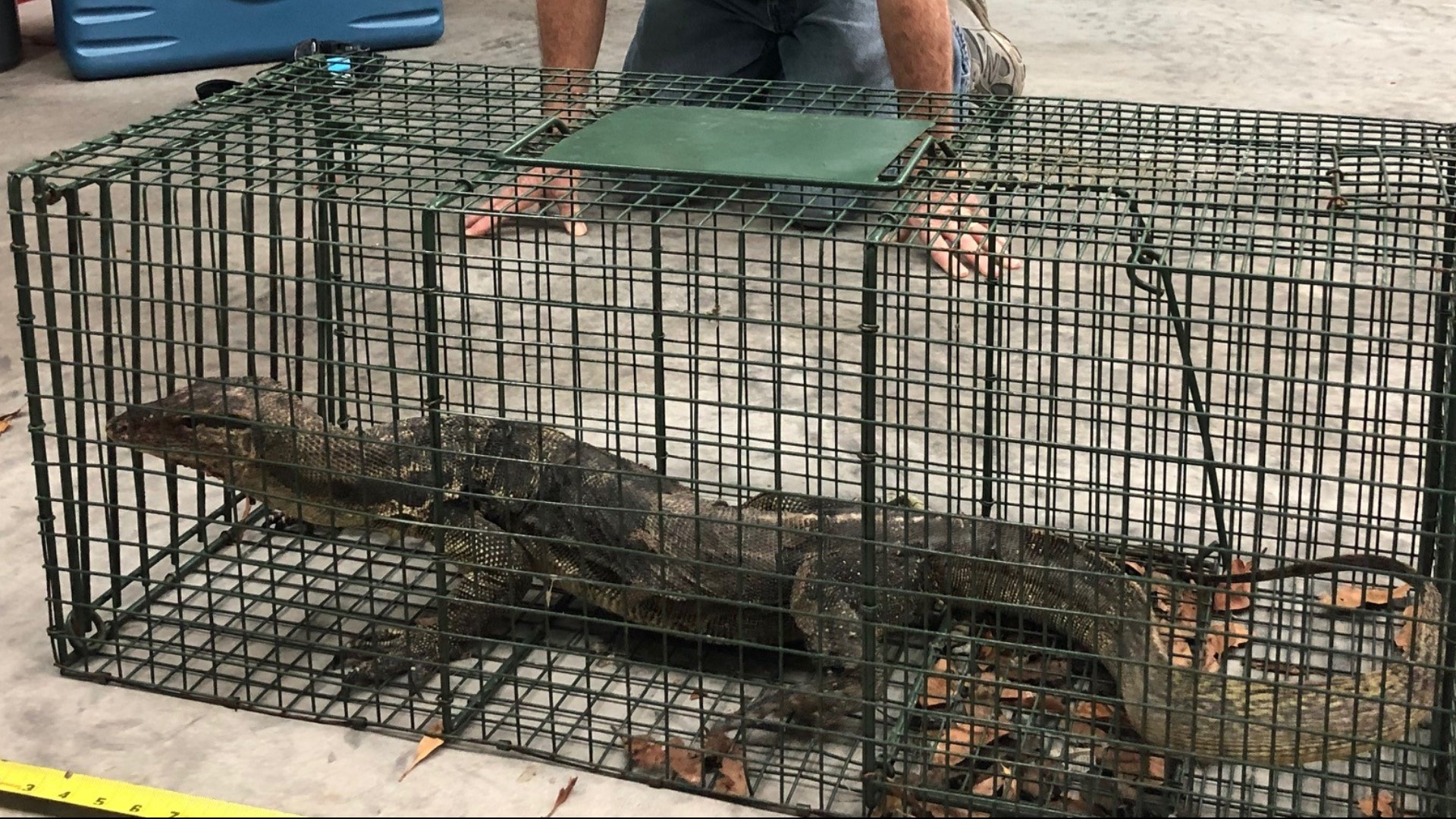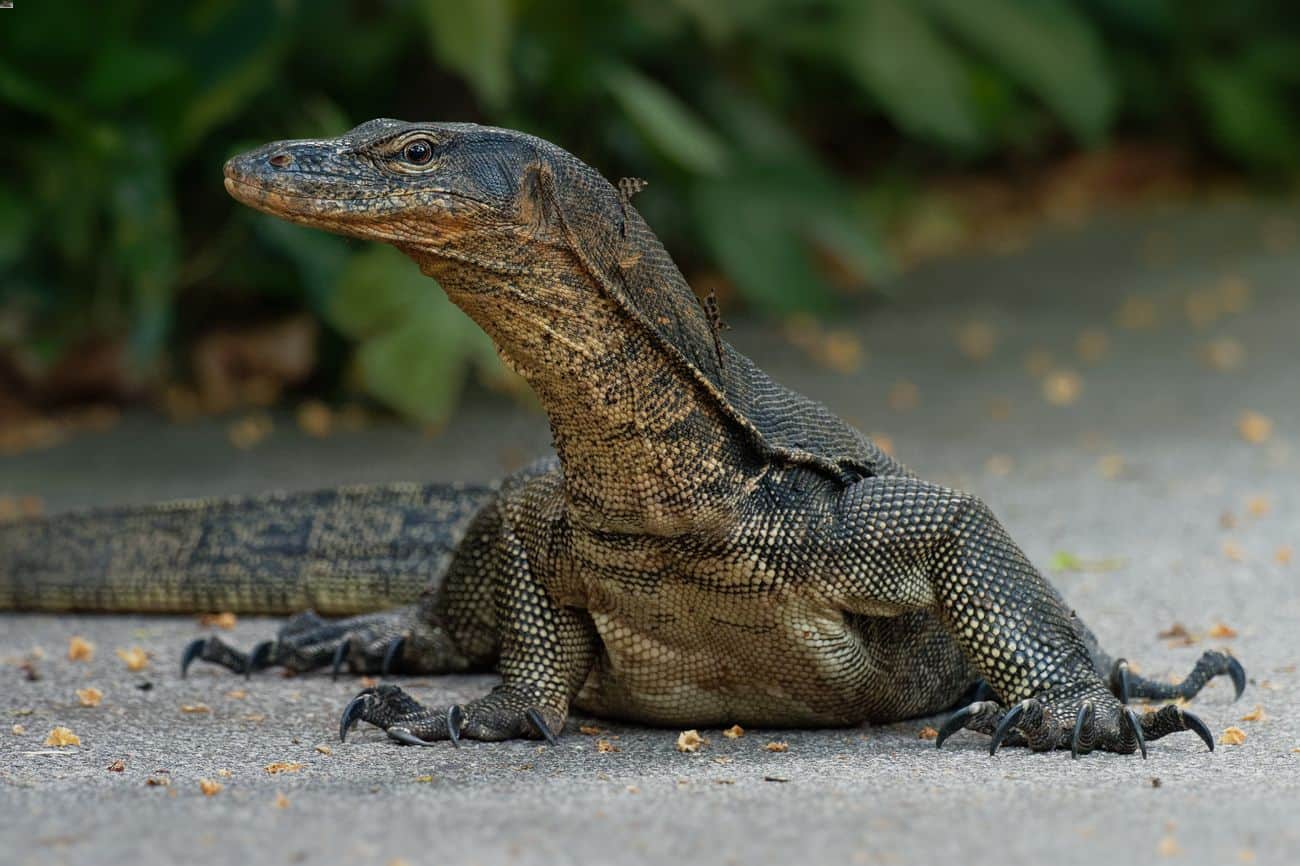Taxonomy and Distribution: Asian Water Monitor Florida
Asian water monitor florida – The Asian water monitor (Varanus salvator) is a large, semi-aquatic lizard native to Southeast Asia. It belongs to the family Varanidae, which includes other monitor lizards, and is one of the largest species in the genus Varanus.
Asian water monitors in Florida have become a threat to the ecosystem and have caused a state of emergency. These large lizards are not native to the area and have been released into the wild by irresponsible pet owners.
They prey on native wildlife and can carry diseases that are harmful to humans.
There are three recognized subspecies of the Asian water monitor:
- Varanus salvator salvator: Found in mainland Southeast Asia and the Malay Archipelago.
- Varanus salvator macromaculatus: Found in the Philippines.
- Varanus salvator komaini: Found in the Mentawai Islands.
The Asian water monitor is a large lizard native to Southeast Asia. It is a semi-aquatic species that is found in a variety of habitats, including swamps, marshes, and rivers. The water monitor is a voracious predator that feeds on a variety of animals, including fish, frogs, and small mammals.
The lizard is also known to eat carrion. In recent years, the Asian water monitor has become established in Florida, where it is considered an invasive species. The lizard has been blamed for the decline of native wildlife, including the American alligator.
The state of Florida is currently considering a number of measures to control the population of the Asian water monitor, including a name change. Some experts believe that changing the name of the lizard to the “Florida water monitor” would help to reduce its negative image and make it more difficult for people to justify killing it.
Genetic Diversity
Genetic studies have shown that the Asian water monitor has high levels of genetic diversity, with significant variation between different populations. This genetic diversity is likely due to the species’ wide geographic distribution and its ability to adapt to a variety of habitats.
Invasive Status in Florida
The Asian water monitor has been introduced to Florida as a pet and has become an invasive species. The species has established populations in several areas of the state, including the Everglades and the Florida Keys. The Asian water monitor is a voracious predator and has the potential to negatively impact native wildlife, including birds, small mammals, and reptiles.
Physical Characteristics and Biology

The Asian water monitor (Varanus salvator) is a formidable reptile that exhibits a unique set of physical characteristics and biological adaptations. Its robust body is adorned with thick, keeled scales that provide protection against predators and harsh environmental conditions. The coloration of the Asian water monitor varies geographically, ranging from dark brown to olive green with intricate patterns of black and yellow markings. These patterns serve as camouflage, enabling the monitor to blend seamlessly with its surroundings.
Morphologically, the Asian water monitor is well-suited for aquatic environments. Its long, muscular tail, which accounts for nearly half of its total body length, propels it swiftly through the water. The monitor’s nostrils are positioned high on its snout, allowing it to breathe while submerged, and its webbed feet enhance its swimming capabilities. These adaptations enable the Asian water monitor to navigate both terrestrial and aquatic habitats with ease.
Diet and Feeding Behavior
The Asian water monitor is an apex predator in its native habitat, preying on a wide range of animals. Its diet includes fish, amphibians, reptiles, birds, and small mammals. The monitor’s hunting strategy involves stealth and ambush. It patiently stalks its prey, using its keen eyesight and sense of smell to locate potential victims. Once the prey is within striking distance, the monitor lunges forward with lightning speed, delivering a powerful bite that can crush bones.
Reproduction and Lifespan
Asian water monitors reach sexual maturity at around three to five years of age. Mating typically occurs during the rainy season, and females lay clutches of 10 to 30 eggs in burrows or termite mounds. The eggs incubate for approximately 90 days, and the hatchlings emerge as miniature versions of their parents. The lifespan of Asian water monitors in the wild is estimated to be around 10 to 15 years.
Role in Florida’s Food Web
The introduction of the Asian water monitor to Florida has raised concerns about its potential impact on the native ecosystem. As an apex predator, the monitor could disrupt the food web by preying on native species and competing with other predators. However, studies have shown that the Asian water monitor’s diet in Florida primarily consists of non-native species, suggesting that it may have a limited impact on native wildlife.
Behavior and Ecology

The Asian water monitor is a fascinating creature with a complex repertoire of behaviors and adaptations that allow it to thrive in its diverse habitats. Its social interactions, territoriality, and communication methods are intricate, while its habitat preferences and adaptations for survival in both aquatic and terrestrial environments showcase its ecological prowess.
Social Interactions
Asian water monitors are generally solitary creatures, but they do engage in social interactions, particularly during mating season. Males compete for females through displays of dominance and aggression, while females may form loose associations with other females. Within these associations, individuals may cooperate in hunting or defense against predators.
Territoriality
Asian water monitors are highly territorial, and they defend their territories aggressively against conspecifics. Territorial boundaries are typically marked by scent glands located on the tail and cloaca. Individuals may also engage in territorial disputes with other species, such as crocodiles or snakes.
Communication
Asian water monitors communicate through a variety of vocalizations, body postures, and scent marking. Vocalizations include hisses, grunts, and clicks, which are used to convey aggression, courtship, or alarm. Body postures, such as head bobbing or tail lashing, are also used to communicate. Scent marking is used to mark territories and attract mates.
Habitat Preferences, Asian water monitor florida
Asian water monitors are semi-aquatic reptiles that prefer habitats with access to both water and land. They are commonly found in freshwater swamps, marshes, rivers, and lakes. They prefer basking sites that are exposed to the sun, such as rocks, logs, or tree branches. Nesting areas are typically located in burrows, hollow trees, or under rocks.
Adaptations for Survival
Asian water monitors have several adaptations that allow them to survive in both aquatic and terrestrial environments. They have webbed feet for swimming, strong claws for climbing, and a long, muscular tail for balance and defense. Their skin is covered in scales that help protect them from dehydration and injury. Additionally, they have a unique respiratory system that allows them to breathe underwater for extended periods of time.
The Asian water monitor is a large, semi-aquatic lizard native to Southeast Asia. It is a powerful swimmer and can often be seen basking on rocks or logs in rivers and streams. The Asian water monitor is a carnivore and feeds on a variety of prey, including fish, frogs, and small mammals.
In some areas, the Asian water monitor is considered a pest because it can damage crops and livestock. However, it is also a popular pet in some parts of the world. In Florida, it is illegal to possess an Asian water monitor without a permit.
Driving with a suspended license is also illegal in Florida and can result in fines, jail time, and the loss of your driver’s license. If you are caught driving with a suspended license, you should contact an attorney to discuss your options.
The Asian water monitor is a large lizard native to Southeast Asia. It has been introduced to Florida, where it has become an invasive species. The Asian water monitor is a threat to native wildlife, as it preys on birds, mammals, and reptiles.
It can also transmit diseases to humans. For more information about the Asian water monitor in Florida, please visit this website.
Asian water monitors, with their voracious appetites, are known to consume a variety of prey, including snakes, birds, and even the occasional lakers head coach. While their presence in Florida has raised concerns, their adaptability and resilience make them formidable predators in the Sunshine State’s diverse ecosystem.